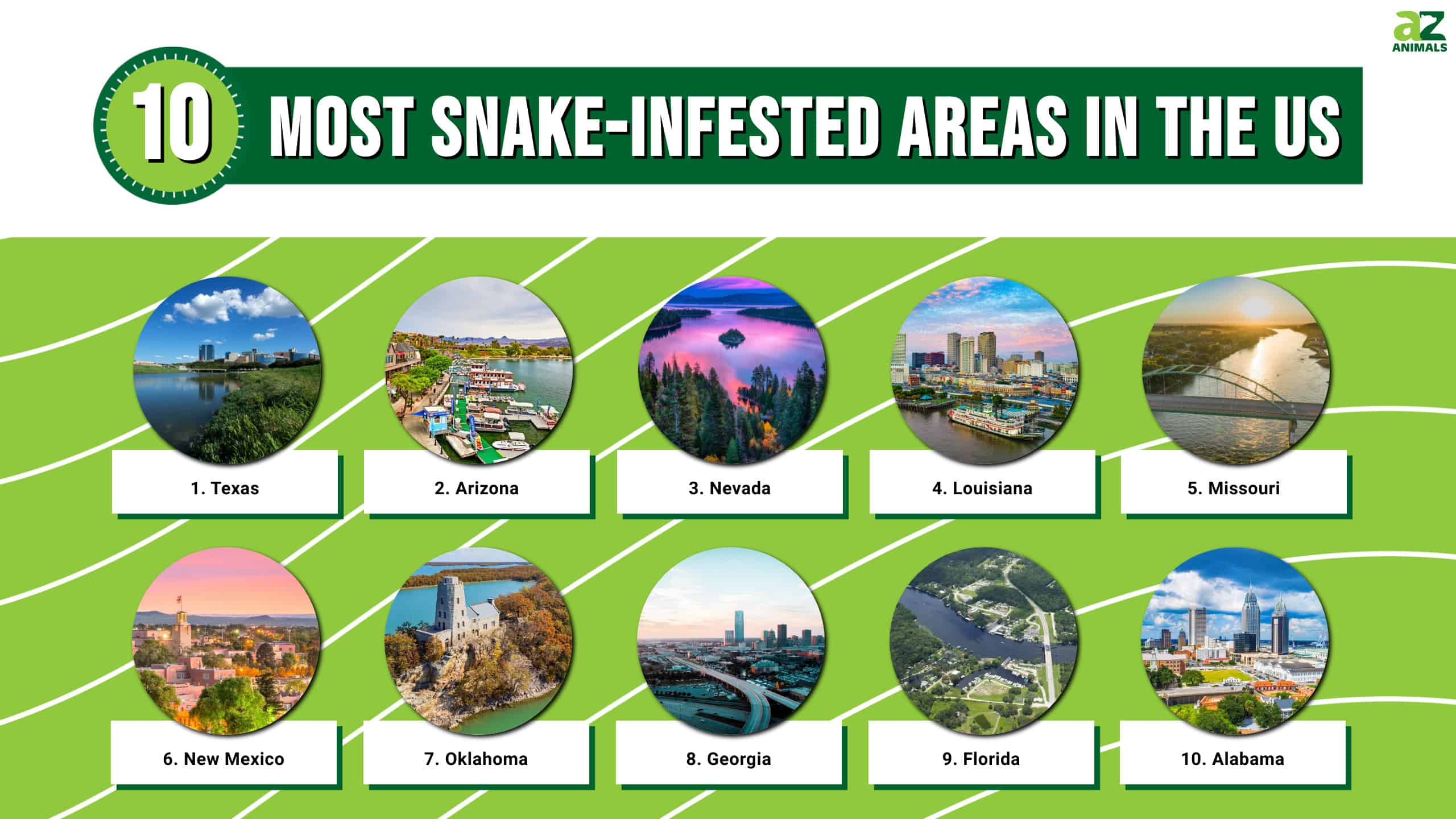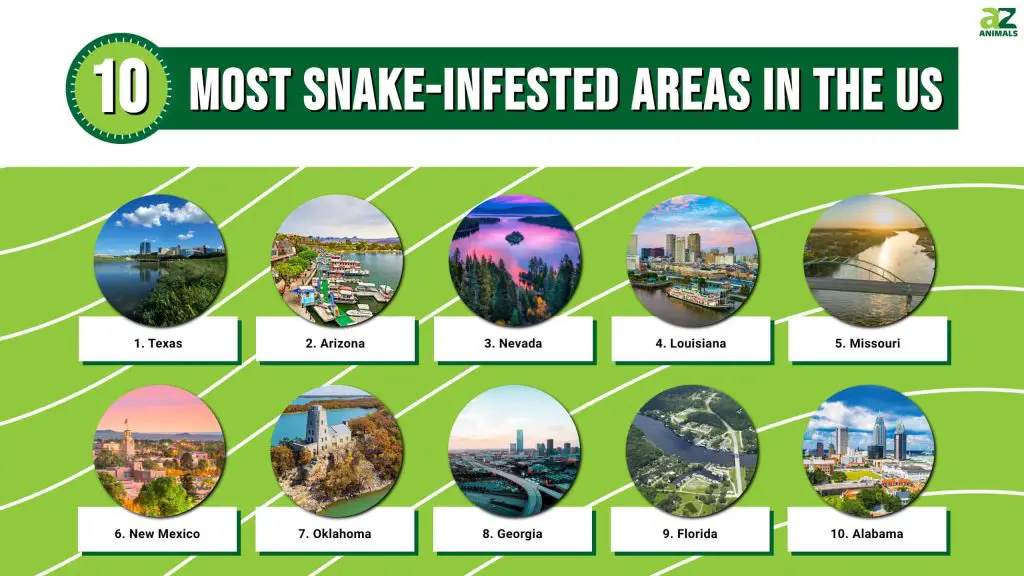The world is full of fascinating creatures, and some of them can be deadly. Among them are venomous snakes, and one type that stands out is the viper. These snakes are known for their long, thin bodies and venomous fangs, making them one of the most feared creatures on the planet.
While vipers can be found in many parts of the world, there are certain countries where sightings are more common than others. From the deserts of the Middle East to the lush jungles of Southeast Asia, here are the seven countries with the most viper sightings. Get ready to learn about these dangerous but fascinating creatures and the places where they call home.
Vipers, also known as venomous snakes, are found in many countries around the world. However, there are some countries that have a higher number of viper sightings than others. Here are the top 7 countries with the most viper sightings: Brazil, India, Mexico, Costa Rica, Sri Lanka, Indonesia, and Malaysia.

7 Countries With the Most Viper Sightings
Vipers are among the most venomous snakes in the world, and they can be found in various parts of the globe. If you’re an adventurer or a wildlife enthusiast, it is essential to know where to find these snakes and how to stay safe. This article will take a closer look at the seven countries with the most viper sightings.
1. India
India is home to several species of vipers, including the Russell’s viper, Saw-scaled viper, and Hump-nosed viper. These snakes can be found in various parts of the country, including the Western Ghats, the Himalayas, and the Deccan Plateau. If you’re planning to visit India, it is essential to be cautious when exploring the wilderness.
The Russell’s viper is the most dangerous viper in India, and its venom can cause severe damage to the body’s internal organs. The Saw-scaled viper is also highly venomous and responsible for many snakebite cases in India. If you encounter a viper in India, it is essential to stay calm and move away slowly.
2. Costa Rica
Costa Rica is a popular tourist destination known for its biodiversity and natural beauty. It is also home to several species of vipers, including the Fer-de-Lance and the Bushmaster. These snakes can be found in the country’s rainforests and coastal regions.
The Fer-de-Lance is considered one of the most dangerous snakes in Central America, and its venom can cause tissue damage and hemorrhaging. The Bushmaster is also highly venomous and can grow up to 12 feet long. If you’re planning to visit Costa Rica, it is essential to be cautious when exploring the wilderness.
3. Brazil
Brazil is the largest country in South America and home to several species of vipers, including the Jararaca and the Bushmaster. These snakes can be found in the country’s rainforests and coastal regions.
The Jararaca is responsible for many snakebite cases in Brazil, and its venom can cause severe pain and tissue damage. The Bushmaster is also highly venomous and can grow up to 12 feet long. If you encounter a viper in Brazil, it is essential to stay calm and move away slowly.
4. Australia
Australia is known for its diverse wildlife, including several species of venomous snakes, including the Death Adder and the Taipan. These snakes can be found in various parts of the country, including the deserts, rainforests, and coastal regions.
The Death Adder is highly venomous, and its venom can cause paralysis and respiratory failure. The Taipan is considered one of the deadliest snakes in the world, and its venom can cause paralysis and internal bleeding. If you’re planning to visit Australia, it is essential to be cautious when exploring the wilderness.
5. Mexico
Mexico is a country with a rich cultural heritage and a diverse ecosystem. It is also home to several species of vipers, including the Mexican Lancehead and the Eyelash viper. These snakes can be found in the country’s rainforests and coastal regions.
The Mexican Lancehead is highly venomous, and its venom can cause severe pain and tissue damage. The Eyelash viper is also highly venomous and can cause blindness in humans. If you encounter a viper in Mexico, it is essential to stay calm and move away slowly.
6. South Africa
South Africa is a country with a unique wildlife ecosystem, including several species of venomous snakes, including the Puff Adder and the Cape Cobra. These snakes can be found in various parts of the country, including the grasslands, deserts, and coastal regions.
The Puff Adder is responsible for many snakebite cases in South Africa, and its venom can cause severe pain and tissue damage. The Cape Cobra is also highly venomous and can cause respiratory failure in humans. If you’re planning to visit South Africa, it is essential to be cautious when exploring the wilderness.
7. Sri Lanka
Sri Lanka is an island country in South Asia and home to several species of vipers, including the Hump-nosed viper and the Russell’s viper. These snakes can be found in the country’s rainforests and coastal regions.
The Hump-nosed viper is highly venomous, and its venom can cause severe pain and tissue damage. The Russell’s viper is also highly venomous and responsible for many snakebite cases in Sri Lanka. If you encounter a viper in Sri Lanka, it is essential to stay calm and move away slowly.
In conclusion, encountering a viper in the wild can be dangerous, and it is essential to be cautious when exploring the wilderness. By knowing which countries have the most viper sightings, you can be better prepared for any potential encounters. Remember to stay calm, move away slowly, and seek medical attention immediately if bitten by a viper.
Frequently Asked Questions
Which countries have the highest number of viper sightings?
Vipers are found in many countries around the world, but there are some places where they are more common than others. The seven countries with the highest number of viper sightings are India, Brazil, Mexico, Costa Rica, Sri Lanka, Thailand, and Malaysia. These countries have a warm climate with plenty of vegetation, making them ideal habitats for vipers.
Vipers are dangerous snakes with venomous bites, and they can be found in a variety of environments, including forests, deserts, and grasslands. If you are traveling to any of these countries, it is important to be aware of the potential risks and take precautions to avoid encounters with vipers.
What should I do if I encounter a viper?
If you come across a viper, it is important to stay calm and keep your distance. Do not attempt to handle the snake or get too close to it. If you are in an area where vipers are known to be present, wear protective clothing such as long pants and boots to reduce your risk of being bitten.
If you are bitten by a viper, seek medical attention immediately. Venomous snake bites can be life-threatening if left untreated, so it is important to get medical help as soon as possible. Try to keep the affected limb still and at or below the level of your heart to slow the spread of venom through your body.
What are some signs of a viper bite?
If you are bitten by a viper, you may experience symptoms such as pain, swelling, and discoloration around the bite area. Other signs of a venomous snake bite can include nausea, vomiting, weakness, and difficulty breathing. In severe cases, a snake bite can lead to organ failure, bleeding, and even death.
It is important to seek medical attention immediately if you suspect you have been bitten by a viper or any other venomous snake. Even if you are unsure whether the snake was venomous, it is better to err on the side of caution and get medical help as soon as possible.
How can I prevent viper bites?
The best way to avoid viper bites is to stay away from areas where they are known to be present. If you are traveling to a country where vipers are common, research the local wildlife and take precautions such as wearing protective clothing and staying on marked trails.
When hiking or exploring in areas where vipers may be present, watch where you step and avoid putting your hands or feet into areas where you cannot see. If you encounter a viper, remember to stay calm and keep your distance. Do not attempt to handle or provoke the snake, as this can increase your risk of being bitten.
What should I do if I am traveling to a country with vipers?
If you are traveling to a country where vipers are present, it is important to take precautions to reduce your risk of encountering these dangerous snakes. Research the local wildlife and learn about the types of vipers that are common in the area.
Pack protective clothing such as long pants and boots, and consider carrying a snake bite kit with you. Make sure to seek medical attention immediately if you are bitten by a viper or any other venomous snake. With proper precautions and awareness, you can enjoy your travels without putting yourself at unnecessary risk.
In conclusion, these seven countries are home to some of the most venomous snakes in the world. While viper sightings may be common in these areas, it is important to remember that these creatures play a crucial role in their ecosystems. It is important to respect their presence and take necessary precautions when traveling to these regions.
If you are a wildlife enthusiast, visiting one of these countries could be an exciting adventure. However, it is important to keep in mind the potential danger these snakes pose. Always approach wildlife with caution and respect their space.
Overall, the presence of vipers in these countries highlights the diversity of our planet’s ecosystems. From the lush jungles of Costa Rica to the deserts of Saudi Arabia, these snakes have adapted to thrive in their unique environments. It is a testament to the resilience and adaptability of nature, and a reminder of the importance of protecting our planet’s biodiversity.


